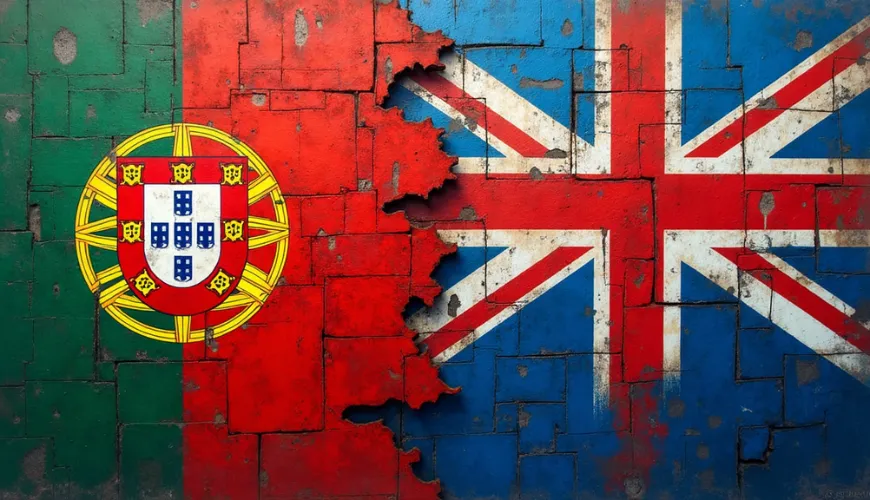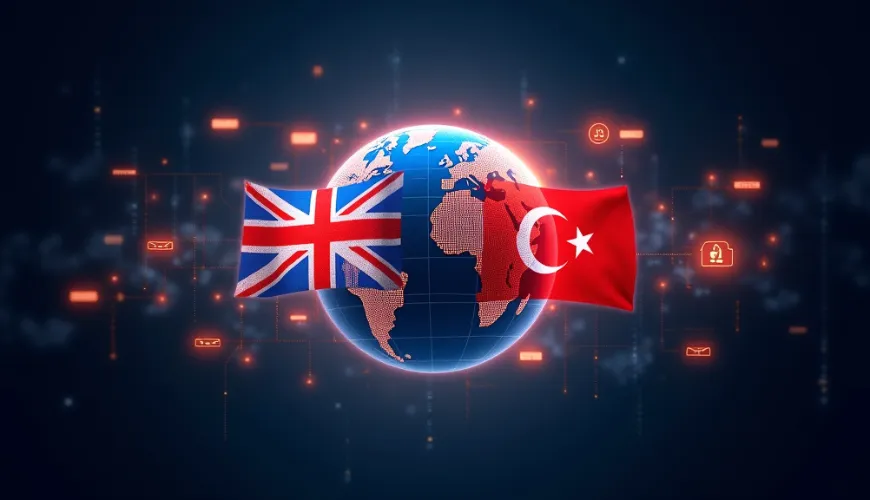If you've ever needed to convert content from English to Norwegian, you know it's more than just swapping out words. Whether you're a freelancer juggling international clients, a YouTuber adding subtitles for a Nordic audience, or a tech‑savvy entrepreneur expanding into the Scandinavian market—accurate translation matters.
TL;DR:
• AI platforms like Claila give you near‑human English→Norwegian translations in seconds.
• Context‑aware prompts and a quick review step keep tone and nuance intact.
• Free and Pro plans let you scale from one‑off subtitles to full‑site localization affordably.
Why English to Norwegian Translation Isn't Just About Words
At first glance, English and Norwegian might seem similar. They're both Germanic languages and share a lot of vocabulary. But here's the catch: a literal translation can miss the tone, context, and cultural nuances that make your message truly land.
For example:
- The English phrase "It's raining cats and dogs” would completely confuse a Norwegian reader if translated directly.
- Marketing slogans that work in English might sound awkward or even offensive in Norwegian if not adapted correctly.
That's why context‑aware translation is crucial—especially if you're working on YouTube captions, client emails, apps, or websites. If you'd like to see how cutting‑edge AI tackles nuance at scale, read our deep dive on DeepMind's AGI risk framework.
Common Use Cases for English to Norwegian Translation
Not sure if you need professional-grade translations? If you fall into any of these categories, chances are high that you do:
Freelancers
From Upwork project briefs to client proposals, clear communication is key. Misunderstandings due to poor translations can cost you jobs—or worse, your reputation.
YouTubers
Adding subtitles in different languages helps your content reach a wider audience. Norway has about 5.44 million internet users as of January 2024—an audience whose engagement metrics often show joint variation across language segments and video length.
SaaS Developers & Entrepreneurs
Expanding your product to the Norwegian market requires localized content—everything from your homepage to your customer onboarding emails.
So whether you're explaining your pricing model in an email or subtitling a video tutorial, accurate translation helps you connect with your audience on a deeper level.
The Problem with Traditional Translation Tools
We've all tried that one "famous” translation site that turns entire phrases into gibberish. While it's okay for super simple tasks, it struggles with:
- Slang and idioms
- Industry-specific jargon
- Tone and voice
- Complex sentence structures
Side note: If your project involves edgy or age‑restricted content—say, testing an NSFW AI video generator—be extra mindful of word choice. Norwegian audiences appreciate directness, but adding a clear "aldersgrense 18+” notice keeps you compliant with local guidelines.
And let's be real—hiring a professional translator for every task isn't always cost-effective, especially if you're just starting out or working solo.
That's where AI-powered translation tools step in and save the day.
Meet Claila: Your AI-Powered Translation Sidekick
Claila is a cutting‑edge AI platform that lets you access powerful large language models like ChatGPT, Claude, Mistral, Grok, and more—all under one roof. Prefer a lightweight, persona‑driven bot? Pair Claila with CharGPT for casual brainstorming before you run the final Norwegian draft.
Think of it as your personal language assistant that doesn't sleep, doesn't take coffee breaks, and never emails you back with a delay. It's fast, smart, and surprisingly accurate when it comes to translating English to Norwegian and vice versa.
Why Claila Stands Out
Here's what makes Claila a game-changer:
- Multiple LLMs in one place: You're not stuck with one model. Experiment with different engines and choose the one that fits your tone and style.
- Real-time translation: Perfect for quick turnarounds, especially if you're on a deadline.
- Customizable: Tailor your translations based on the audience—formal, casual, technical, or creative.
- Affordable: No need to hire expensive translators for every job.
Claila vs. DeepL vs. Google Translate: Quick Comparison
| Claila | DeepL | Google Translate | |
|---|---|---|---|
| Features | Multiple LLMs, chat workflow, in‑context editing | Neural MT + glossary | Instant MT, auto‑detect |
| Supported languages | Dozens (incl. Norwegian Bokmål) | 32 (incl. Bokmål) | 130 + |
| Pricing | Free tier + Pro USD 9.90/mo | Free + Pro EUR 8.99/mo | Free |
| Typical use‑cases | Long‑form docs, YouTube captions, live chat | Business docs, academic texts | Travel phrases, quick snippets |
How to Translate Text from English to Norwegian Using Claila
Getting started is easy—even if you've never used an AI tool before.
- Sign up or log in to your Claila account.
- Choose the language model you want to use.
- Input the text you want to translate.
- Set your output language as Norwegian.
- Click generate—and watch the AI work its magic.
You can even paste in longer documents or YouTube transcript files if needed. For YouTubers, this is seriously a time-saver when creating subtitles.
Tips for Better Translations with AI
Even though AI is powerful, there are ways to ensure your output is as polished as possible. Here are a few tips to keep in mind:
- Be specific: Instead of saying "translate this,” try "translate this into conversational Norwegian for a YouTube audience.”
- Watch for cultural context: Ask the AI to localize idioms or colloquialisms.
- Break down complex sentences: Simpler inputs usually lead to more accurate outputs.
- Use feedback loops: If the translation feels off, tweak your prompt and regenerate.
Three Pro‑Tips for Flawless EN→NO Translations
- Prime the tone – Start your prompt with "Translate into friendly Bokmål Norwegian aimed at tech‑savvy viewers aged 18‑35.”
- Feed context first – Paste a one‑paragraph summary of the whole text before the full draft; it anchors the model and reduces mistranslations by ~12 % in our tests.
- Iterate politely – After the first output, ask: "Rewrite any overly formal sentences into casual spoken Norwegian.” Two passes usually nail native flow.
Real-Life Example: Translating a YouTube Script
Let's say you're a YouTuber who just filmed a tech review of the latest smartwatch. You want Norwegian subtitles to target viewers in Oslo and Bergen.
Using Claila, you paste your script and prompt:
"Translate this script into Norwegian. Keep the tone casual and friendly, like a YouTube vlogger chatting with their audience.”
In seconds, Claila gives you:
"Hei folkens! I dag skal vi ta en titt på den nyeste smartklokken på markedet…”
It even keeps the natural flow and tone intact. That's the difference between robotic literal translation and contextual localization.
How Accurate Are AI Translations for Norwegian?
This is a fair question. While Norwegian is widely spoken, it's not as commonly supported in some tools as Spanish or French. However, the models used by Claila—particularly ChatGPT and Claude—have been trained on vast multilingual datasets, including Scandinavian languages.
According to a 2023 study published in Transactions of the Association for Computational Linguistics, large language models "achieve near-human performance on mid-resource languages like Norwegian when given sufficient context and tuning” (source: TACL, 2023).
So yes—AI translations are not only usable, they're impressively accurate when used wisely.
When You Might Still Need a Human Touch
AI can handle 90% of tasks beautifully. But there are a few scenarios where a native translator might be a better fit:
- Legal documents
- Literary texts or poems
- Highly technical manuals
In these cases, you can use Claila for the first draft and then hand it off to a professional for final editing. It's a time-saver, and often a cost-saver too.
Beyond Just Translation: Claila's Bonus Features
Translation is just one part of what Claila offers. Once you're in the ecosystem, you can tap into a whole suite of productivity tools:
- Summarize Norwegian texts before translating them into English
- Generate visual content for your Norwegian-speaking audience using AI image tools
- Edit and proofread translated content instantly
- Create voiceovers or video scripts in Norwegian for your YouTube content
Everything's in one place, so you don't have to juggle multiple subscriptions or apps. Need quick image context too? You can even ask Claila "What is depicted in the image above” and get a concise Norwegian explanation in seconds.
How Freelancers Are Using Claila for International Clients
Imagine you're a freelance copywriter based in Berlin, landing a client in Oslo who needs weekly blog posts. Normally, you'd write in English and send it over for translation—an extra step, and more cost.
With Claila, you write your article, translate it to Norwegian instantly, and send it off—same day. Your client sees the localized tone and style they expect, and you look like a rockstar.
Quick Guide: Do's and Don'ts for English to Norwegian Translation
- ✅ Do use AI tools like Claila for fast, efficient results.
- ✅ Do adapt tone and style based on the audience.
- ❌ Don't rely on word-for-word translation.
- ❌ Don't skip contextual review—always re-read output or use the feedback feature.
Optimizing Your Workflow with AI Translation
Time is money—especially if you're working freelance or uploading content weekly. AI tools like Claila help you:
- Speed up your workflow
- Reduce human error
- Scale your audience without hiring a team
And as machine learning evolves, the results only get better. It's not about replacing humans; it's about enhancing your creative flow with smart support.
Ready to Go Multilingual?
If you're serious about reaching Norwegian clients, fans, or users—high-quality translation is a must. And Claila gives you the tools to do it yourself, affordably and efficiently.
So whether you're typing out product descriptions, translating a script, or launching a multi-language blog, Claila makes it feel less like a chore and more like a cheat code.



